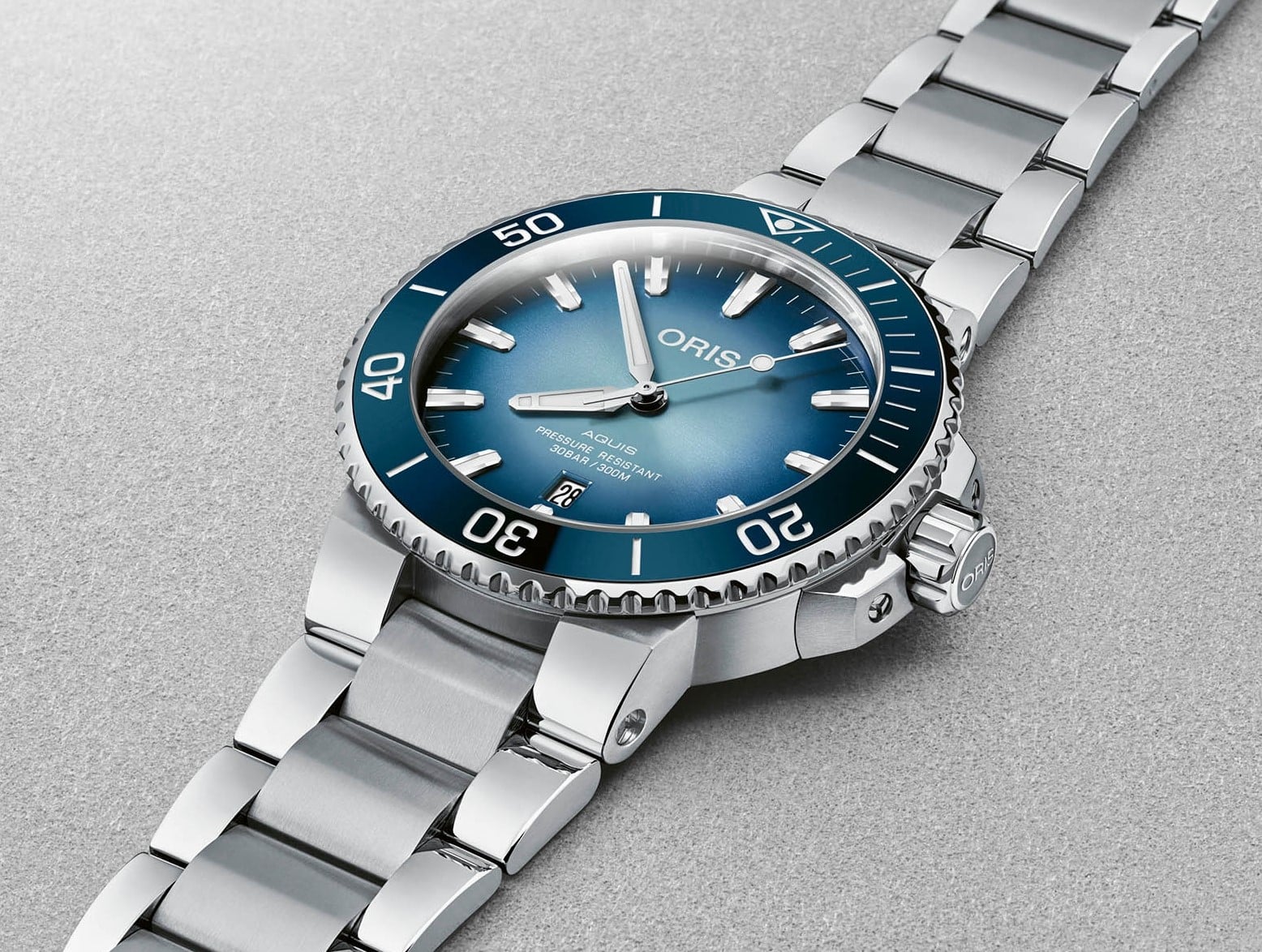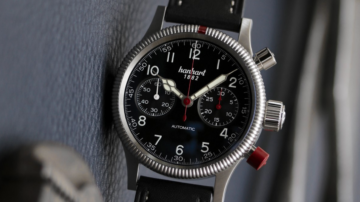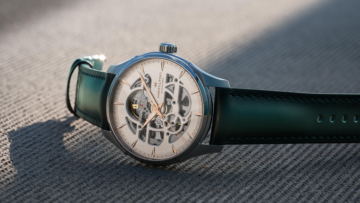Oris is one of the horological industry’s biggest brands with many loyal and devoted fans. Each launch from the brand is eagerly anticipated by collectors as it is famed for impressive technological advancements and unique and precise movements. The history of Oris watches is long and interesting with many great achievements and partnerships throughout the years. Having been founded over 100 years ago, Oris have decades of experience in creating and engineering incredibly high-quality watches that appeal to a great number of collectors.
The Beginnings

The history of Oris begins in 1904 in the Swiss town of Hölstein. The brand was founded by Paul Cattin and Georges Christian who bought the recently closed Lohner and Co watch factory. They named the company ‘Oris’ after a nearby brook. In its first few years, the brand grew slowly and steadily with an assembly plant and second factory opening in 1906 in the nearby town of Holderbank. As the company continued to grow, Oris became the largest employer in Hölstein with 300 employees. The company began building houses and apartments in an attempt to attract more watchmakers to the area.

By 1929, Oris had grown considerably and had factories in Hölstein, Holderbank, Como, Courgenay, Herbetswil and Ziefen. A few years previously, the brand had started fitting bracelet buckles to its pocket watches in order to create its first wristwatches. This advancement in style has a significant impact on the brand’s success.
Sadly, in 1927 Georges Christian passed away, so Jacques-David LeCoultre took his place as the President of the Board of Directors. Following this, Oscar Herzog became the General Manager and would remain in this position for 43 years, guiding Oris through many great changes and successes.
Oris During Wartime

In 1938, just before the start of the second world war, Oris began producing its own escapements. This was a large advancement for the brand that would allow for more independence in its watchmaking. The brand had to begin hiring more watchmakers to ensure that there were enough staff to create the escapements and Oris became one of the first watchmaking companies to offer equal employment opportunities to men and women. The birth of the Big Crown also came in 1938. This watch was precisely designed so that the crown could easily be manipulated by pilots whilst they had their gloves on.
The demand for high-quality mechanical watches dwindled throughout the second world war, so Oris began creating alarm clocks. This change in product allowed the company to support itself throughout the challenges of wartime when many companies struggled. As the war drew to a close, Oris was given the award for accuracy from the Bureau Officiel de Contrôle de la Marhe des Montres which was located in Le Locle.
Technological Advancements
In 1952, Oris launched its first automatic watch. It had a power reserve indicator and was powered by Oris’ Calibre 601 movement. Power reserve indicators were rarely seen in watches of the time, so this was considered a significant advancement. Oris continued to flourish with the launch of a state-of-the-art diver’s watch in 1965. This watch was unusual as it featured a unidirectional rotating bezel, luminous numerals and was water resistant up to 100 metres (10 bar).

The brand was bestowed with a great honour in 1967 when the Oris Calibre 652 was unveiled. This movement was created after Dr Rolf Portmann successfully released the company from the ‘Watch Statute’ and Oris could once again use lever escapements. This movement was awarded a full chronometer certification from the Observatoire Astronomique et Chronométrique.
By 1969, Oris was one of the ten largest watch companies worldwide and was producing 1.2 million watches and clocks per year. The Chronoris was launched the following year. This watch was the brand’s first chronograph model and is now a popular and celebrated timepiece.
Continuous Launches
Throughout the 1980s and 1990s, Oris created watch after watch and each one had a different function or design to appeal to new audiences. The brand struggled through the Quartz Crisis but vowed to only produce mechanical timepieces to ensure that it retained its integrity.
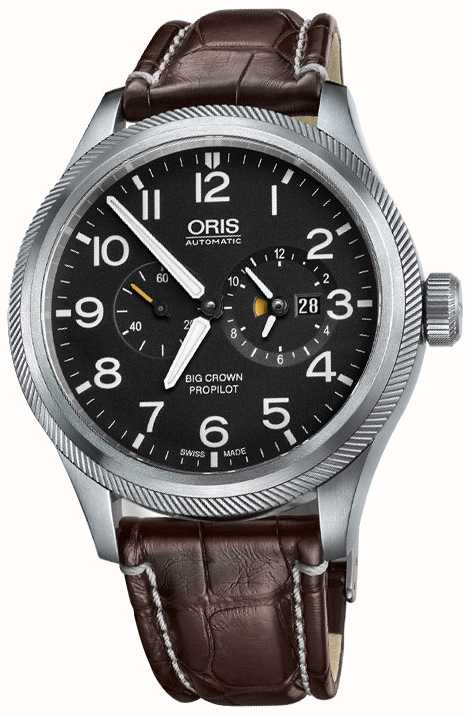
In 1990, Oris coined its ‘High-Mech’ slogan to emphasise the quality and integrity of the Swiss made mechanical movements used in each watch. The brand produced its most complicated movement yet in 1991 with the launch of the Calibre 581. This movement featured a moonphase module that was developed by an in-house team.
The pioneering Oris Worldtimer was produced in 1997. It was a patented function that allowed the wearer to adjust local time forwards or backwards in one-hour jumps. This watch was excellent for people who travelled between time zones regularly.
A New Millennium
With the start of a new millennium, Oris shifted its focus onto developing larger watches in keeping with popular fashions. The Oris XXL was born and became an iconic model in the brand’s portfolio. The famous Red Rotor became the registered trademark for the brand in 2002. It was chosen as it symbolises Oris’ philosophy of producing high quality, Swiss made mechanical timepieces at accessible prices.
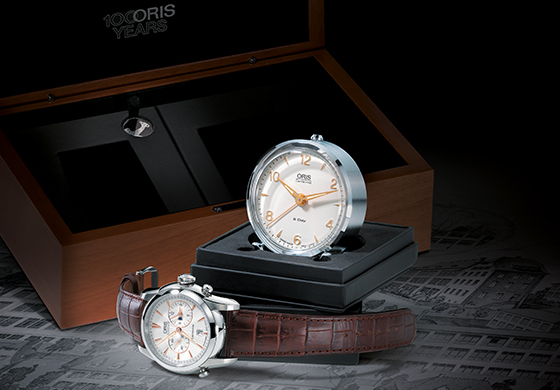
The brand celebrated its 100th anniversary in 2004 by releasing the Oris Centennial Set. This was a huge achievement for the brand after its struggles as a mechanical watch manufacturer throughout the Quartz Crisis. Throughout the 2000s, Oris collaborated with people such as the Williams Formula 1 Team, Carlos Coste, and Roman Frischknecht to develop a series of specialist watches for various sports and activities. The collaboration with Frischknecht led to the creations of the ProDiver with the Rotation Safety System, which allows the unidirectional rotating bezel to be locked into place.
The Recent Years
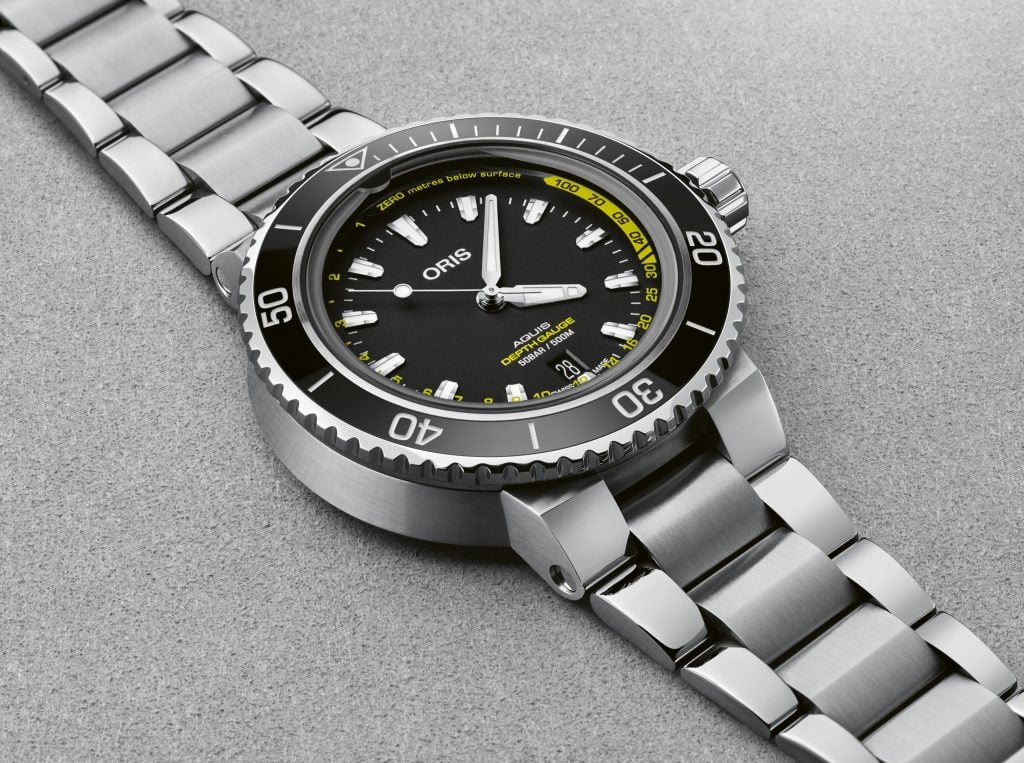
In 2010, the brand created its sliding sledge clasp that prevents a watch from falling off the wrist. This was a valuable addition to Oris watch straps as the brand’s luxury status makes the timepieces very precious to collectors. With 2013 came the launch of the patented Oris Aquis Depth Gauge watch which features a hole in the glass to allow water into the watch. This feature allows the watch to measure the depth at which a diver is swimming.
Over the course of the decade, Oris launched a series of new movements to modernise and advance its watches. For the brand’s 110th birthday in 2014, it created its first in-house movement in 35 years. The Calibre 110 is a hand-wound movement with a ten-day power reserve and a non-linear power reserve indicator. The Calibre 111 was introduced in 2015 and was very similar to the 110 but featured a date complication. The Calibre 112 launch of 2016 saw the addition of a GMT function.
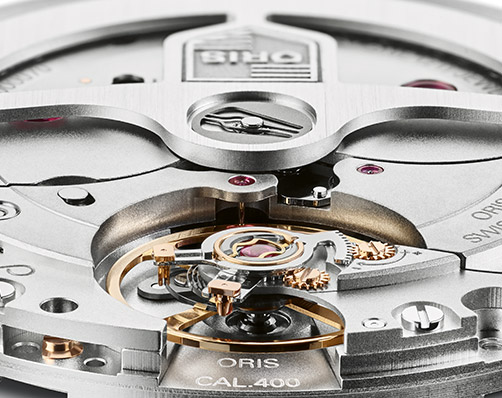
Oris have never stopped creating and releasing new products, which has allowed it to grow and retain its popularity. The Calibre 400 was launched in 2020. This movement is antimagnetic and features a five-day power reserve. The brand’s latest launch of 2021 saw this movement being used in the iconic Oris Aquis Date model with a new smaller size case. Each new launch from Oris is more successful than the last with the fan base growing each year. The history of Oris and all its twists and turns have led the brand to the great success it has today.
Our Top 5 Oris Recommendations
ORIS Aquis Das Watt Limited Edition 01 761 7765 4185-SET
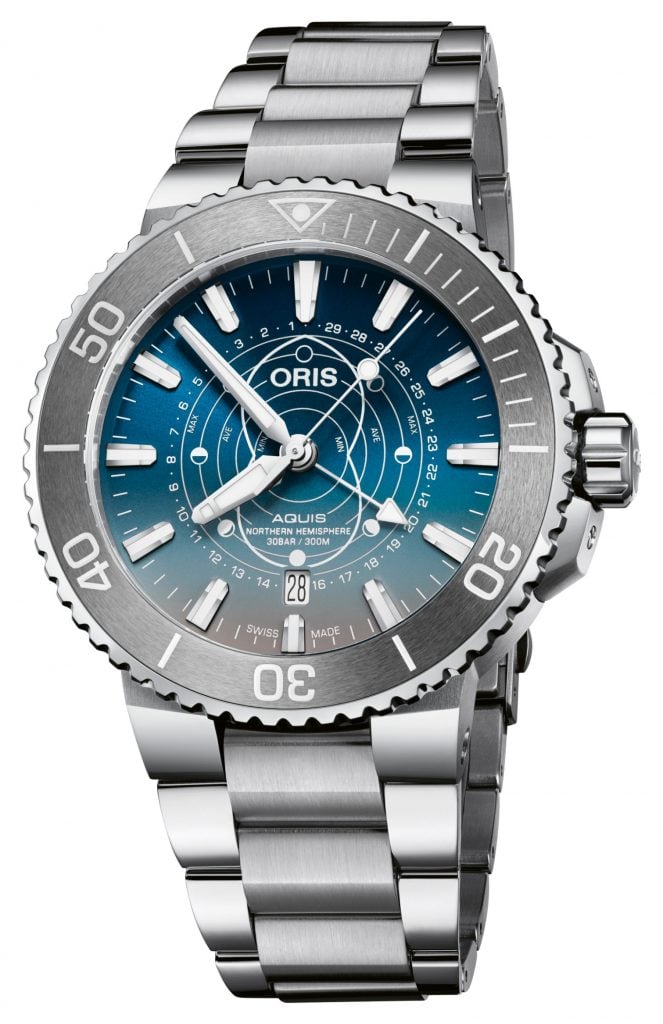
This watch was created in collaboration with the Common Wadden Sea Secretariat to promote the conservation of the Wadden Sea, the world’s largest tidal system. As this watch is a limited edition, there are only 2009 pieces available worldwide. The watch features a blue gradient dial with a sunray finish. The dial features a moon-themed design and a central moonphase indicator hand. A grey Tungsten bezel surrounds the dial and anti-reflective sapphire crystal protects it. The watch is powered by an automatic movement that provides the watch with a 38-hour power reserve. A 43.5mm stainless steel case houses the movement. This watch is water resistant up to 300 metres (30 bar), meaning that it can be worn for most water-based activities. The watch is secured on the wrist using a stainless steel bracelet.
ORIS | Big Crown Pointer Date 80th Anniversary Edition | 01 754 7741 3167-07 5 20 58BR
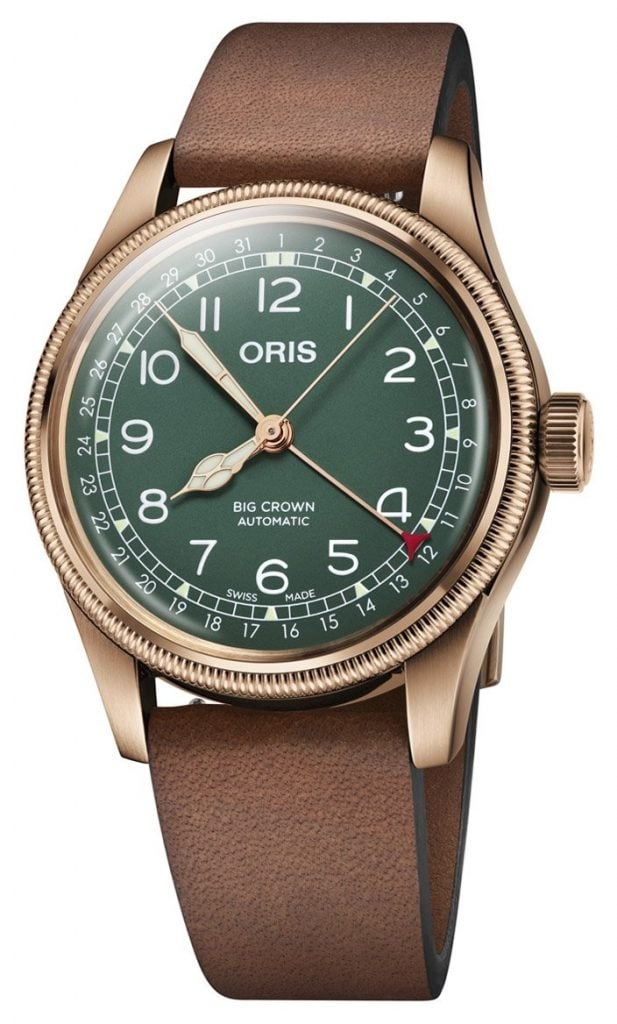
The original Oris Big Crown was created in 1938 and was designed so that pilots could use the crown without needing to remove their gloves. This model was released to celebrate the 80th anniversary of the original watch and retains much of its vintage style. The watch features a green dial with bronze hands to add to the vintage design. The dial is protected by sapphire crystal that has been treated to be anti-reflective. The crystal is domed to further the vintage feel of the watch. This model exhibits a central hand date indicator that uses a date scale around the edge of the dial to display the current date. A 40mm bronze plated stainless steel case frames the dial. This case houses an automatic movement that can be viewed through the exhibition case back. The watch is water resistant up to 50 metres (5 bar) and is finished with a brown leather strap.
ORIS Aquis Depth Gauge Stainless Steel 01 733 7755 4154-SET MB
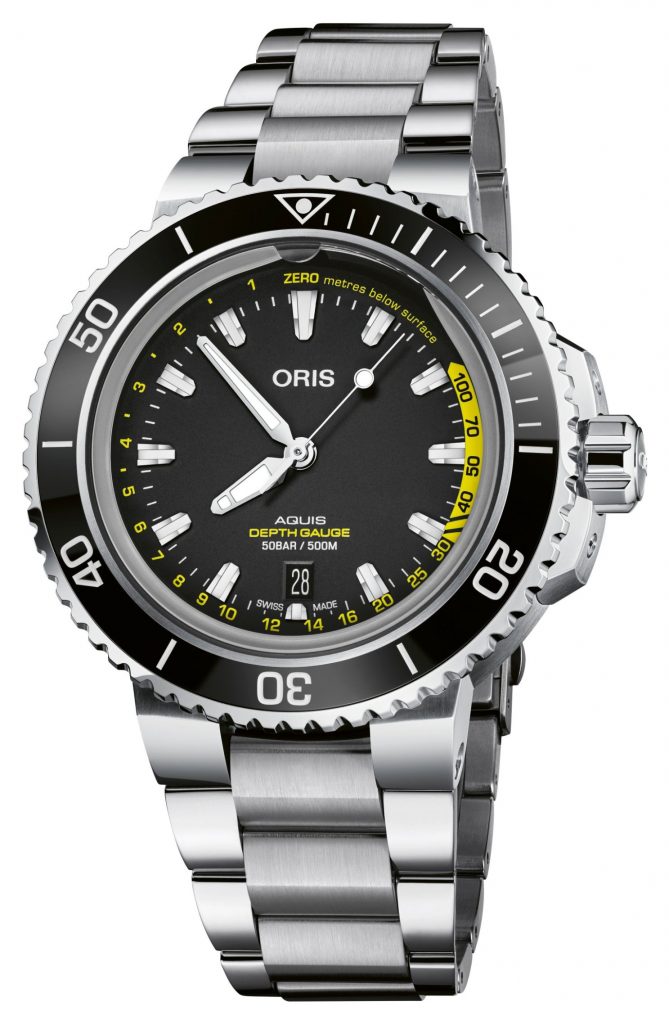
This watch was originally launched in 2013 and features patented technology that is unique to Oris. The key feature of this watch is that water is allowed to enter through a small hole that is connected to a channel that is milled around the edge of the sapphire crystal. The watermark will indicate the depth at which the diver is. This will be clearly visible against the black dial. The dial exhibits silver baton indices and hands with a date aperture at 6 o’clock. A black ceramic bezel and stainless steel case frame the dial. The dial measures 45.8mm in diameter and houses an automatic movement that provides to watch with a 48 hour power reserve. This watch is water resistant up to a staggering 500 metres (50 bar) and is finished with a stainless steel bracelet that fastens with a security folding clasp.
ORIS Carl Brashear Limited Edition | Calibre 401 120 Hours Movement 01 401 7764 3185-SET
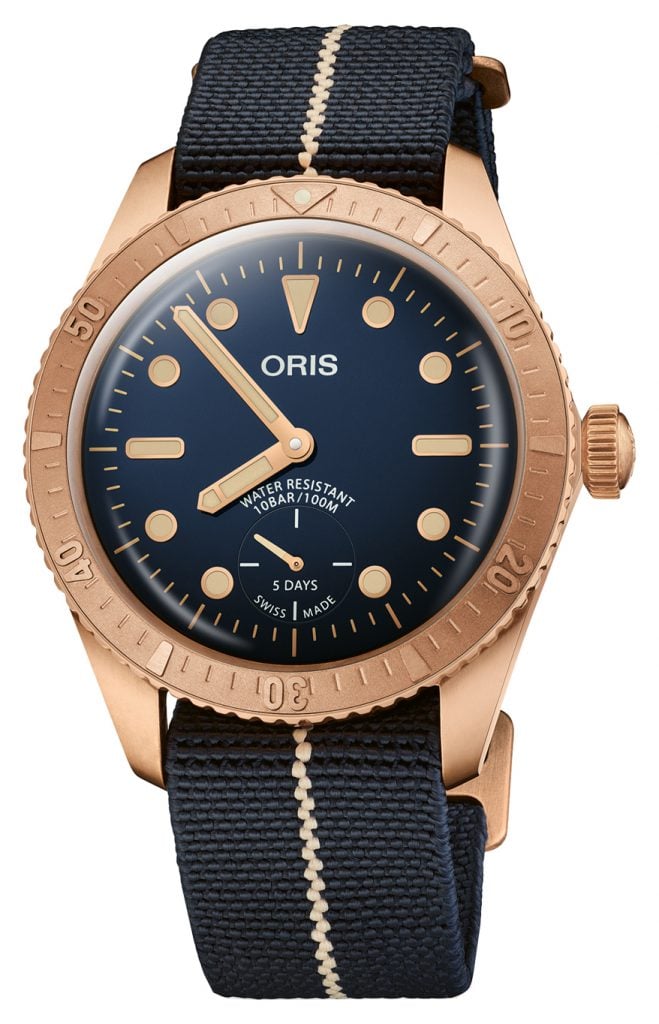
Oris’ Carl Brashear Limited Edition watch was first launched in 2016 and was the brand’s first bronze watch. It was created to remember the incredible life of the U.S. Navy’s first African American diver. The watch features a deep blue dial with rose gold dot and baton indices and rose gold hour and minute hands. A small sub dial is positioned at 6 o’clock to serve as a battery life indicator. The hands and indices are treated with SuperLuminova to ensure that the dial can be read in the dark. A 40mm bronze case houses an Oris 401 automatic movement. This watch is the first in the series to be powered by this movement. This model is water resistant up to 100 metres (10 bar). A blue and beige fabric strap secures the watch on the wrist.
ORIS Aquis Date Calibre 400 41.5mm Green Dial 01 400 7769 4157-07 8 22 09PEB
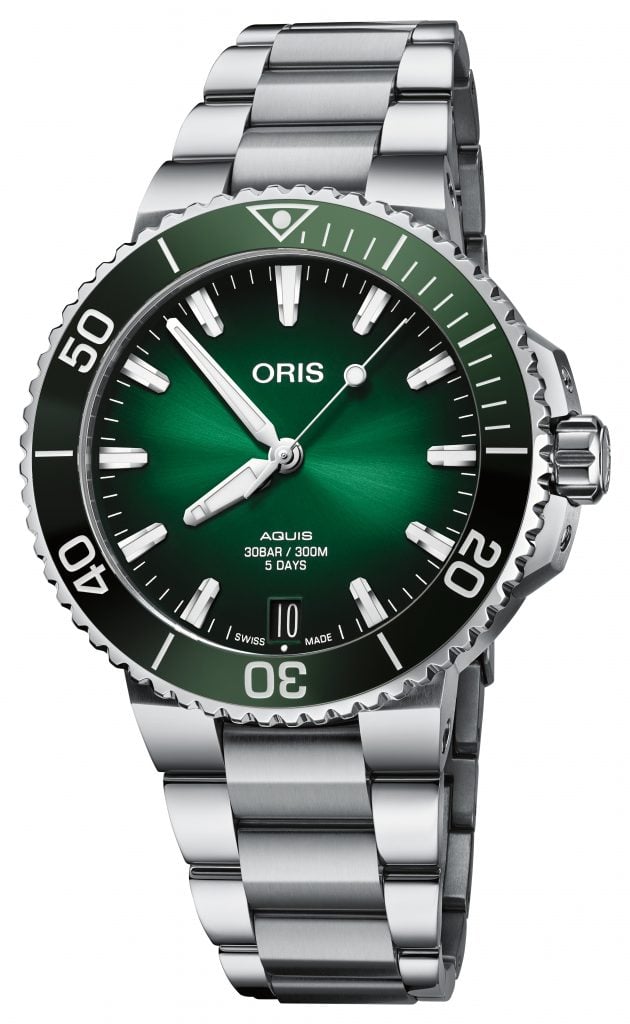
This model is part of Oris’ latest launch. The brand has adapted its iconic Aquis Date model, making it the slightly smaller size of 41.5mm in diameter. This model features an on-trend green dial with a matching green ceramic bezel. The dial exhibits silver hands and indices with a date aperture at 6 o’clock. Antireflective sapphire crystal protects the dial. An Oris Calibre 400 movement powers the watch. It is housed in a stainless steel case that measures 41.5mm in diameter. The case has an exhibition case back that allows the wearer to observe and enjoy the movement within. This model is water resistant up to 300 metres (30 bar), meaning that it can be worn for a multitude of water-based activities. The watch is secured on the wrist using a stainless steel bracelet.
What did you think of the history of Oris watches? Are you considering adding one of our recommendations to your collection? Let us know in the comments below!

